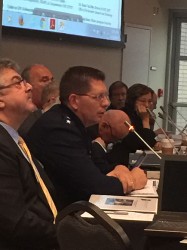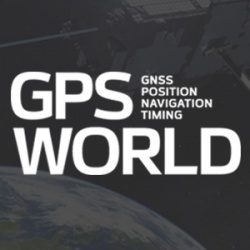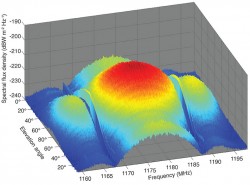
GPS IIF-11 Launch Delayed until Saturday
October 30, 2015
Major General David Thompson, Vice Commander, U.S. Air Force Space Command, announced this morning that the GPS IIF […]
Read More

Major General David Thompson, Vice Commander, U.S. Air Force Space Command, announced this morning that the GPS IIF […]

On Wednesday, the GPS Directorate said further data analysis shows that a technical error affecting some Boeing GPS IIF satellites first appeared […]

The U.S. Air Force is working to resolve a technical error that affected some Boeing GPS satellites, according to […]

A small variance in the L5 signal, which remains well within signal specifications and will not affect pseudorange measurements, may show some impact on triple-frequency combinations of the signal’s carrier phase in high-precision applications. Observations suggest a temperature-dependent line bias in one or more carriers as a likely cause of the observed variation in the tri-carrier combination of L1, L2, and L5.

The GPS Wing and its contractors have traced the cause of pseudorange errors on L1 and L2 broadcast by the newest GPS satellite, SVN-49, to the manner in which the L5 signal demonstration payload was added to the satellite. Signal leakage between the two input ports of the antenna coupler network for the satellite’s array of 12 helical antenna elements, reflected from the L5 filter and then transmitted, creates a second signal with a delay of approximately 30 nanoseconds, and the appearance of a multipath component. While testing an adjustment to the signal-in-space to minimize the effect of the problem on receiver navigation solutions on Earth, the GPS Wing is interested in hearing from manufacturers and the user community concerning the different impacts of SVN-49 signals on the wide range products and applications in operation, before reaching a final decision on what to do with the satellite prior to setting it healthy.

A Preliminary Analysis of SVN49’s Demonstration SignalGreat excitement surrounds the activation of a new transmitter from a satellite — an occasion dubbed first light. Research groups around the globe joined the GPS Wing in monitoring and analyzing the first L5 signals from space. We describe the equipment and procedures used to capture and analyze SVN49’s signals and give an assessment of their characteristics.
Follow Us